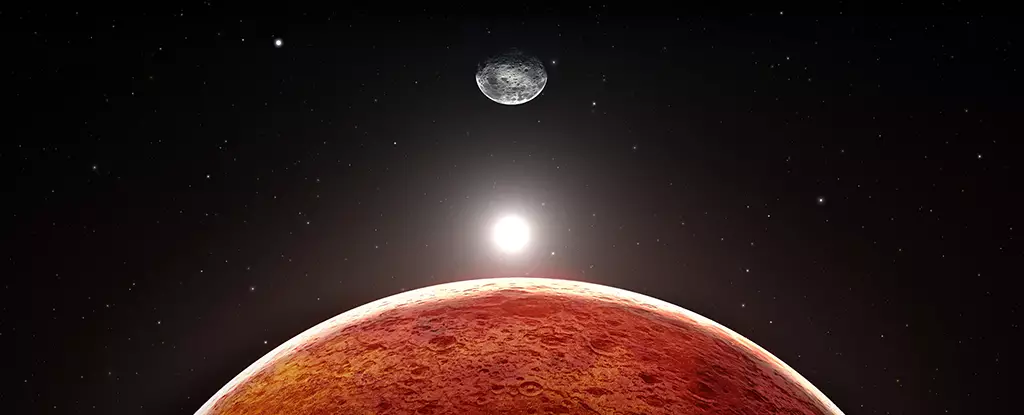Mars, the fourth planet from the Sun, has long captured human curiosity with its rusty hue and barren landscape. However, its unique triaxial shape—a variably squished ellipsoid—has puzzled scientists for years. Recently, astronomer Michael Efroimsky of the US Naval Observatory proposed a groundbreaking hypothesis: the unusual shape and features of Mars could be attributed to a long-gone moon named Nerio. This article will explore Efroimsky’s theory and the implications it holds for understanding Mars’ geological and astronomical history.
Unlike any other planet in our Solar System, Mars exhibits a stark triaxial shape that intrigues astrophysicists. The pronounced differences across its axes raise questions about its formation and subsequent evolution. Traditional theories regarding planetary formation and shape development generally don’t account for such pronounced asymmetry. Mars’ current moons, Phobos and Deimos, are small and have been considered remnants of material left over from the planet’s formation, yet they lack the size and gravitational influence necessary to explain the planet’s unique shape.
Through meticulous modeling, Efroimsky posits that a sizable moon, roughly a third of Earth’s Moon in diameter, could have existed in the early solar system. This hypothetical moon, named Nerio, may have played a crucial role in shaping Mars. The gravitational influence of such a moon would have altered the planet’s form during its formative years, potentially dragging ancient magma oceans and giving rise to the Martian landscape we observe today.
Nerio’s Role in Shaping Mars’ Surface
Efroimsky’s hypothesis extends beyond mere shape; it suggests that Nerio could elucidate various topographical features found on Mars. The planet boasts extraordinary geological formations, such as the Tharsis volcanic plateau, Valles Marineris canyon system, and Olympus Mons—features unmatched in size elsewhere in the solar system. If Nerio were to have existed in the early stages of Mars, its gravitational interaction could have prompted increased volcanic activity and tectonic shifts, leading to the formation of these massive geological structures.
The alignment of Mars’ longest axis with that of the hypothesized moon indicates that the planet might have experienced convective behavior in its mantle, resulting in uplift and the development of these large features. According to Efroimsky, the presence of a significant moon would also have contributed to the tidally driven geological processes that continue to play essential roles in planetary development.
Challenges to the Hypothesis
Despite its persuasiveness, Efroimsky’s hypothesis raises several unanswered questions. Notably, there is no concrete evidence of a moon like Nerio ever colliding with Mars or leaving any trace in its geological record. The absence of significant craters or other signs indicates that if Nerio did exist, its destruction or ejection from orbit must have occurred early in Mars’ history.
Additionally, researchers must confront the question of what ultimately became of Nerio. Did it drift away, succumb to gravitational forces, or was it shattered by an impact event? Theories surrounding its demise remain speculative and warrant further investigation.
Ultimately, Efroimsky’s hypothesis adds a valuable layer to our understanding of Mars’ history. The idea of a long-lost moon may provide insights into the dynamic processes that shaped the Martian landscape over billions of years. As researchers continue to sift through data from Mars rovers and orbiters, they must remain vigilant for signs that may further substantiate or refute the existence of Nerio.
While the theory of a lost moon offers a captivating explanation for Mars’ unusual shape and surface features, the scientific community must approach it with a balanced skepticism. Future studies and explorations will hopefully unravel the complexities of Mars’ formation and bring us closer to an understanding of not just Mars’ past but also the larger narrative of planetary development in our solar system. Through such inquiries, we may unveil the secrets that Mars has guarded for eons, enhancing our knowledge of the planet and its place in the cosmos.

